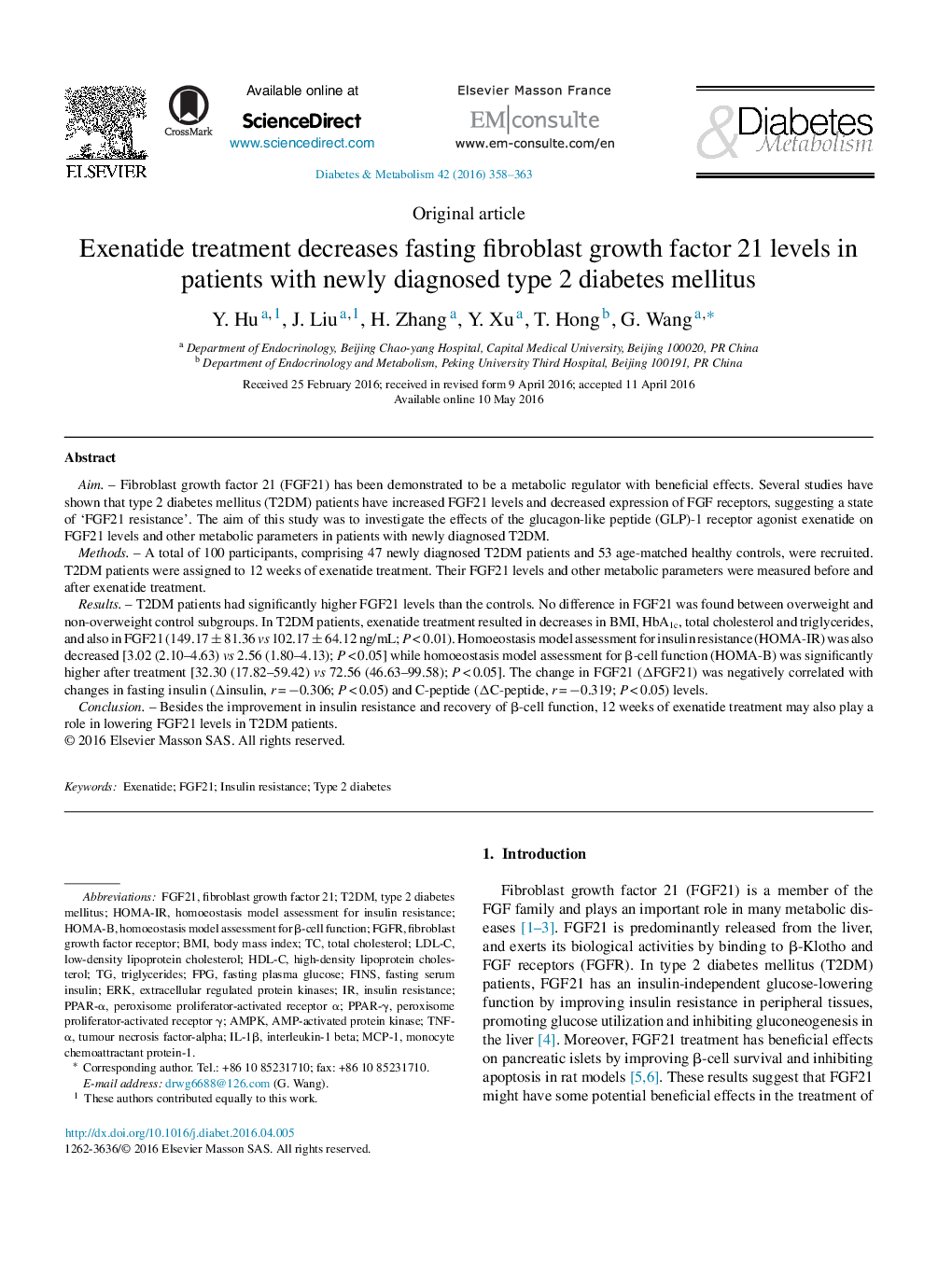| Article ID | Journal | Published Year | Pages | File Type |
|---|---|---|---|---|
| 5655179 | Diabetes & Metabolism | 2016 | 6 Pages |
AimFibroblast growth factor 21 (FGF21) has been demonstrated to be a metabolic regulator with beneficial effects. Several studies have shown that type 2 diabetes mellitus (T2DM) patients have increased FGF21 levels and decreased expression of FGF receptors, suggesting a state of 'FGF21 resistance'. The aim of this study was to investigate the effects of the glucagon-like peptide (GLP)-1 receptor agonist exenatide on FGF21 levels and other metabolic parameters in patients with newly diagnosed T2DM.MethodsA total of 100 participants, comprising 47 newly diagnosed T2DM patients and 53 age-matched healthy controls, were recruited. T2DM patients were assigned to 12 weeks of exenatide treatment. Their FGF21 levels and other metabolic parameters were measured before and after exenatide treatment.ResultsT2DM patients had significantly higher FGF21 levels than the controls. No difference in FGF21 was found between overweight and non-overweight control subgroups. In T2DM patients, exenatide treatment resulted in decreases in BMI, HbA1c, total cholesterol and triglycerides, and also in FGF21 (149.17 ± 81.36 vs 102.17 ± 64.12 ng/mL; P < 0.01). Homoeostasis model assessment for insulin resistance (HOMA-IR) was also decreased [3.02 (2.10-4.63) vs 2.56 (1.80-4.13); P < 0.05] while homoeostasis model assessment for β-cell function (HOMA-B) was significantly higher after treatment [32.30 (17.82-59.42) vs 72.56 (46.63-99.58); P < 0.05]. The change in FGF21 (ÎFGF21) was negatively correlated with changes in fasting insulin (Îinsulin, r = â0.306; P < 0.05) and C-peptide (ÎC-peptide, r = â0.319; P < 0.05) levels.ConclusionBesides the improvement in insulin resistance and recovery of β-cell function, 12 weeks of exenatide treatment may also play a role in lowering FGF21 levels in T2DM patients.
